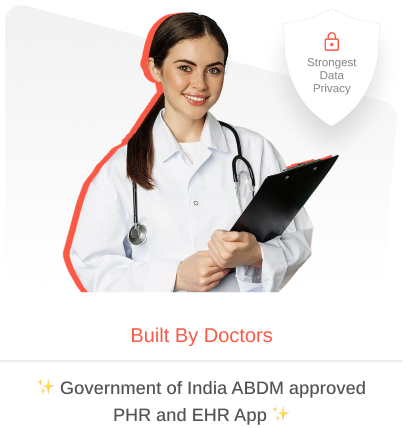As digitalization occurs in the healthcare industry, the Electronic Health Record systems play a critical role in streamlining operations, improving patient care, and optimizing workflow. These systems integrate patient management software with advanced health information management tools to provide seamless, real-time access to medical records. By eliminating paper-based documentation, EHRs improve efficiency, reduce errors, and promote data-driven decision-making. In this guide, we will explore what EHR systems are, their advantages, types, challenges, and their future role in the evolving healthcare system.
What Are Electronic Health Record (EHR) Systems?
Electronic Health Record Systems are digital platforms that store, manage, and retrieve patients’ medical history, treatment plans, laboratory results, and other important health information. These systems are designed to enhance the efficiency of the healthcare system by providing healthcare professionals with real-time access to patient records. EHR systems go beyond simple documentation by integrating patient management software that facilitates scheduling, billing, and prescription management. They enable easy communication among healthcare providers, ensuring better coordination of care. Additionally, they help in maintaining regulatory compliance and data security through robust health information management practices. As the demand for digital healthcare solutions grows, EHR systems continue to play an essential role in medical institutions worldwide.
Advantages of Electronic Health Record Systems
Improved Patient Care
EHR systems enhance patient care by providing accurate and up-to-date medical histories, reducing errors, and supporting evidence-based treatment decisions. Doctors can access critical information such as allergies, medication history, and test results in real-time. Automated alerts and decision-support tools help in diagnosing and managing chronic diseases more effectively. Integration with the software ensures easy coordination between healthcare providers, leading to improved treatment outcomes. With EHRs, healthcare professionals can track a patient’s progress over time and adjust treatments accordingly. Moreover, electronic prescriptions reduce medication errors, improving overall patient safety.
Increased Efficiency and Workflow Optimization
By digitizing patient records, EHR systems eliminate the need for physical storage and manual paperwork and this significantly improves workflow efficiency. Automated documentation and recovery processes saves time for both medical staff and administrative personnel. Integrated health information management tools streamline appointment scheduling, billing, and insurance claims processing. This reduces administrative burdens, allowing healthcare professionals to focus on patient care. Additionally, EHRs minimize redundant tests by providing instant access to past diagnostic results. Real-time data sharing among departments ensures smooth coordination and faster decision-making.
Enhanced Data Security and Compliance
EHR systems incorporate advanced security measures such as encryption, access controls, and audit logs to safeguard patient information. Compliance with regulatory standards like HIPAA and GDPR ensures the confidentiality and integrity of medical records. These systems offer role-based access, restricting unauthorized personnel from viewing sensitive data. Cloud-based EHR solutions provide secure data backups, preventing loss due to hardware failures or cyber threats. Regular security updates and monitoring further enhance protection against data breaches. By maintaining accurate and secure records, EHR systems help healthcare organizations build patient trust and regulatory compliance.
Better Coordination and Communication Among Providers
EHR systems improve coordination between primary care physicians, specialists, and other healthcare providers by enabling better data exchange. Instant access to shared records ensures that all involved professionals have a complete understanding of a patient’s medical history. This reduces duplication of tests and prevents conflicting treatments which help in enhancing patient safety. Telemedicine integration within EHR systems further improves communication, especially for remote consultations. Enhanced interoperability between different healthcare facilities ensures continuity of care for patients across various settings.
Reduced Costs and Resource Utilization
The adoption of EHR systems leads to cost savings by eliminating paper-based documentation, reducing administrative expenses, and optimizing resource allocation. Automated processes lower staffing costs by minimizing the need for manual data entry. EHRs reduce duplicate testing and unnecessary hospitalizations, saving both patients and healthcare facilities significant expenses. Digital billing and automated insurance claim processing speed up reimbursements, improving financial efficiency. Furthermore, improved patient care and reduced readmission rates lead to long-term cost benefits. By optimizing workflow and reducing inefficiencies, EHRs make healthcare delivery more cost-effective.
Types of Electronic Health Record Systems
1. Cloud-Based EHR Systems
Cloud-based EHR solutions store patient data on secure remote servers, allowing access from any location with an internet connection. These systems offer scalability, reduced IT maintenance costs, and automatic software updates. These systems are ideal for healthcare providers looking for cost-effective and flexible solutions. They support interoperability by enabling smooth data exchange between different healthcare facilities. Additionally, cloud storage enhances disaster recovery capabilities by ensuring data backups. Security features such as encryption and multi-factor authentication protect patient information from unauthorized access.
2. On-Premise EHR Systems
On-premise EHR systems store data within a healthcare facility’s internal servers, offering complete control over security and customization. These systems require higher upfront investment and IT maintenance but provide enhanced data privacy. Large hospitals and healthcare institutions prefer on-premise solutions due to their ability to integrate with existing infrastructure. Organizations can customize the system based on specific workflow requirements. Since data remains within the facility, these systems reduce dependency on third-party vendors. However, they require dedicated IT teams to manage updates, security protocols, and system performance.
3. Specialty-Specific EHR Systems
Specialty-specific EHRs are designed to cater to the unique needs of particular medical fields, such as cardiology, dermatology, and paediatrics. These systems include customized templates, tools, and workflows customized to the specific requirements of different specialties. Specialty EHRs improve efficiency by streamlining documentation and diagnostic procedures for specialized treatments. They integrate with medical imaging and diagnostic devices relevant to the specialty. Physicians benefit from automated recommendations based on specialty-specific guidelines. These EHRs enhance patient outcomes by ensuring specialized treatment protocols are followed effectively.
Read More: How Patient Management Software Helps Reduce Medical Errors
Challenges in Implementing EHR Systems
1. High Initial Costs
The implementation of EHR systems requires substantial financial investment in software, hardware, training, and ongoing maintenance. Small healthcare practices may find it challenging to allocate sufficient resources for adoption.
2. Data Security Concerns
The risk of cyber threats and data breaches remains a major concern for healthcare organizations using digital records. Regular security audits and compliance measures are necessary to mitigate vulnerabilities.
3. Resistance to Change
Healthcare professionals may resist transitioning to EHR systems due to usability concerns and workflow disruptions. Proper training and support can help ease adoption challenges.
4. Interoperability Issues
Integrating EHR systems with existing healthcare software and ensuring seamless data exchange between different providers remain technical challenges that need to be addressed.
Future Role of EHR Systems in Healthcare
The future of EHR systems lies in their integration with emerging technologies like Artificial Intelligence (AI), machine learning, and blockchain. AI-powered analytics will enhance predictive diagnostics and personalized treatment plans. Blockchain technology will improve security and transparency in the healthcare management system. Interoperability improvements will allow easy sharing of patient records across healthcare networks. Telemedicine integration will expand access to care, especially in remote areas. Additionally, voice recognition and natural language processing will streamline documentation processes for healthcare professionals. As EHR systems continue to evolve, they will play a critical role in shaping the future of digital healthcare.
Conclusion
With the integration of advanced EHR systems, platforms like Roojh are revolutionizing patient care by providing secure, seamless access to health records. Roojh EHR enables patients to manage their medical history effortlessly, ensuring continuity of care and quick access to essential information. By leveraging digital solutions, patients can schedule appointments, track treatments, and communicate with healthcare providers efficiently. This digital transformation not only enhances patient engagement but also improves the efficiency of the overall healthcare system. As organizations like Roojh continue to innovate, the future of healthcare will become more patient-centric, secure, and technologically advanced.








